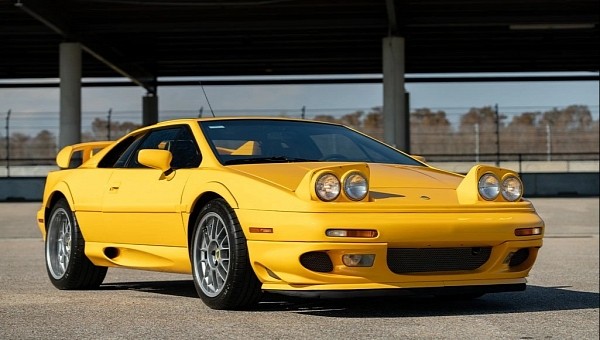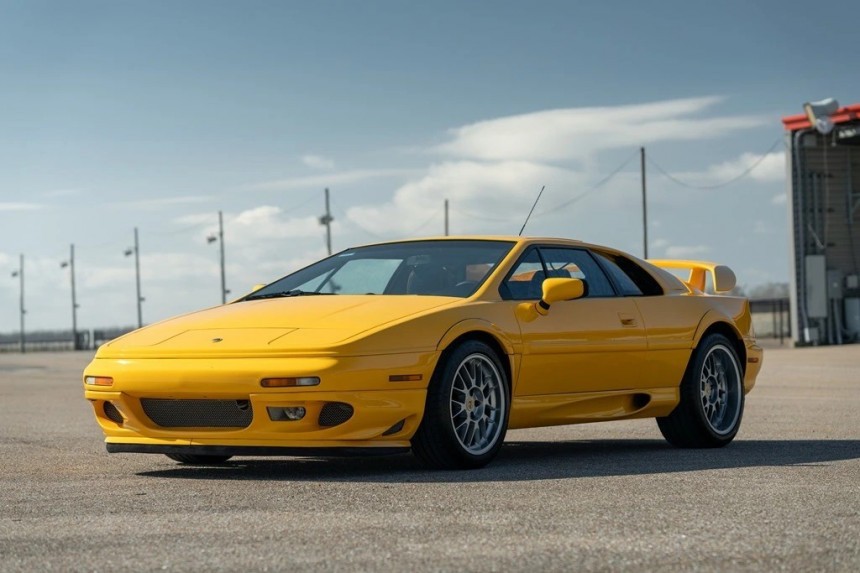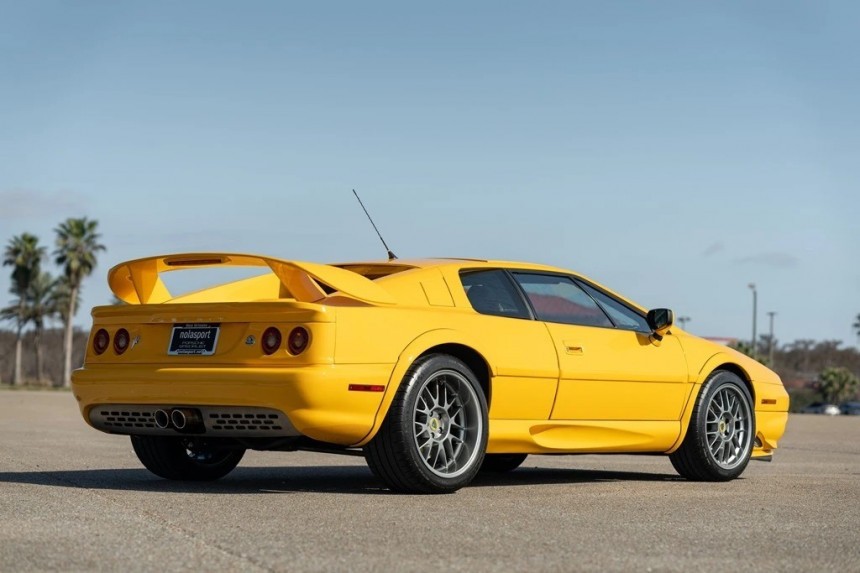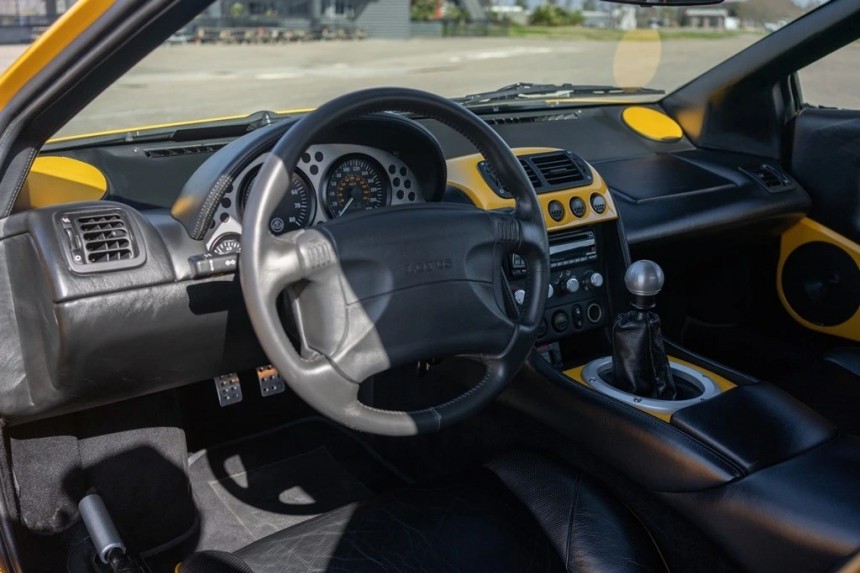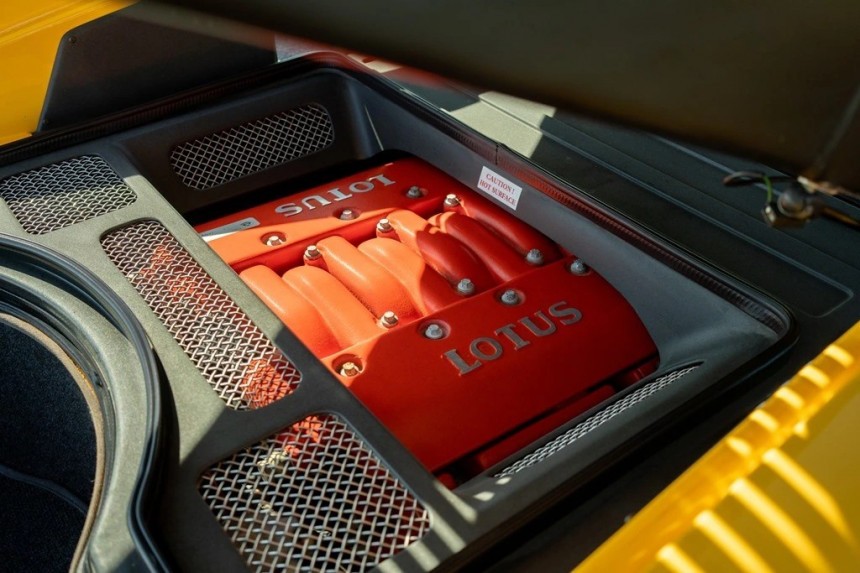When you think of British cars, the first things that probably pop into your head are small roadsters or big, luxury land yachts. So, what happens when one of Britain's most notorious F1 manufacturer decides to build a supercar? Well, the supercar in question is the Lotus Esprit, so let’s dive.
The Lotus story starts in 1948, when Lotus co-founder, Colin Chapman, hand-built his first race car, a modified Austin 7. In 1952, he partnered up with fellow University of London graduate Colin Dare and officially started Lotus Engineering Ltd.
Two years later, in 1954, Team Lotus was separated from the engineering company, focusing entirely on racing, more specifically, Formula 1. The first Grand Prix start for a Lotus car was in 1958. They continued to be competitive up until 1994, when Lotus withdrew from Formula 1.
While the racing history is impressive, to say the least, today, we are focusing on road cars. The first car available to the public made by Lotus was the Lotus Seven. It was bare-bones, to put it nicely. Yes, it was a road car, but with track driving being one of the main focuses – and it came as a kit car to avoid taxes, a sort of Ikea for cars.
Their first car with a roof, and that functioned like a more-or-less, normal car, was the Elite. It had a monocoque fiberglass body and a 1.2-liter (73 ci) four-banger churning out 75 hp (76 ps). It was followed by the Elan, which kept the same philosophy. Now, we can keep talking about Lotus models for hours, but we are here to talk about the all-mighty Esprit, so let’s fast forward to that.
The Esprit was born at the idea of Tony Rudd, who arrived at Lotus in 1969. The following year, he proposed two models, the M50, which eventually resurrected the Elite name in 1974, and the M70, which was supposed to replace the mid-engined Europa.
But, the path to production for the M70 was a little rocky, as Colin Chapman was disappointed with the wind tunnel test. That said, a prototype was still revealed to the public at the 1972 Turin Auto Show. Seeing how well the public received it, the M70 was back on track, and, in 1976, it hit the roads as the Esprit.
The Esprit was designed by Giorgetto Giugiaro using the Maserati Boomerang concept as inspiration. The result was a wedge-shaped, mid-engined car. The power plant was a 2.0-liter (122 ci) four-cylinder that churned out 160 hp (165 ps) – which is quite a lot in a sub-1,000-kg (2,200-lb) car.
The following generations retained the wedgy shape and four-bangers, albeit in different configurations, like the third generation Turbo Esprit that put out 215 hp (218 ps) – in a 1000 kg car, so it's safe to say it’s pretty fast, even by today’s standards.
The Esprit received a major redesign in 1988, called the X180. The redesign came courtesy of Peter Stevens – the guy who went on to design the McLaren F1. Stevens ditched the angular shape in favor of a rounded, more modern look.
The final generation launched in 1993, and it was based on the X180, with a few changes to the body thanks to Julian Thomson. The round Esprit kept the four-cylinder power plants, with the Sport version getting 301 hp (305 ps), from a 2.2-liter (134 ci) turbocharged four-banger.
But, in 1996, Lotus would unleash the best iteration of the Esprit – the Esprit V8. Today, we have a beautiful V8 Esprit from 2004, which means it’s a Final Edition special. First of all, the Final Edition means that it is one of only 79 built between 2003 and 2004, so the scarcity box on the supercar list can be checked.
This particular Esprit V8 is finished in Mustard Yellow, with 17-inch wheels in the front and 18s in the back. Among the cool exterior design ques we find a pretty hefty rear wing, removable roof, and the all-mighty pop-up headlights - and that, alongside the C5 Corvette, makes it the last production car to come with pop-ups.
Stepping inside, you will find black leather seats with yellow accents. The same color scheme can be found throughout the rest of the cabin. The leather-wrapped steering wheel fronts a 220-mph (355 kph) speedo, a tachometer, and a few additional gauges.
Now, it’s time to poke the monster that powers this thing. It is a 3.5-liter (213 ci) V8 with not one, but two Garrett turbochargers strapped to it. The result is 350 hp (355 ps) in a 1300 kg package (2800 lbs). The engine was detuned from a monstrous 500 hp (507 ps), but even in this tamed version, it still propels the Esprit from zero to 60 mph (96 kph) in just 4.4 seconds!
Power is sent to the rear wheels via a five-speed transaxle manual gearbox. Stopping power comes courtesy of AP Racing calipers and ventilated rotors on all four corners. Making sure that you hear this fast banana scream, is an aftermarket exhaust.
This particular Esprit V8 is up at auction in New Orleans, Louisiana. The price currently sits at 65,000 dollars with five days left on the auction. It has 31,000 miles (50,000 km) on the clock and it comes with a clean Carfax report and a clean Texas title.
The Esprit is a fully-fledged supercar, one of the last analog experiences you can get, and that makes it really, really cool.
Two years later, in 1954, Team Lotus was separated from the engineering company, focusing entirely on racing, more specifically, Formula 1. The first Grand Prix start for a Lotus car was in 1958. They continued to be competitive up until 1994, when Lotus withdrew from Formula 1.
While the racing history is impressive, to say the least, today, we are focusing on road cars. The first car available to the public made by Lotus was the Lotus Seven. It was bare-bones, to put it nicely. Yes, it was a road car, but with track driving being one of the main focuses – and it came as a kit car to avoid taxes, a sort of Ikea for cars.
The Esprit was born at the idea of Tony Rudd, who arrived at Lotus in 1969. The following year, he proposed two models, the M50, which eventually resurrected the Elite name in 1974, and the M70, which was supposed to replace the mid-engined Europa.
But, the path to production for the M70 was a little rocky, as Colin Chapman was disappointed with the wind tunnel test. That said, a prototype was still revealed to the public at the 1972 Turin Auto Show. Seeing how well the public received it, the M70 was back on track, and, in 1976, it hit the roads as the Esprit.
The following generations retained the wedgy shape and four-bangers, albeit in different configurations, like the third generation Turbo Esprit that put out 215 hp (218 ps) – in a 1000 kg car, so it's safe to say it’s pretty fast, even by today’s standards.
The Esprit received a major redesign in 1988, called the X180. The redesign came courtesy of Peter Stevens – the guy who went on to design the McLaren F1. Stevens ditched the angular shape in favor of a rounded, more modern look.
The final generation launched in 1993, and it was based on the X180, with a few changes to the body thanks to Julian Thomson. The round Esprit kept the four-cylinder power plants, with the Sport version getting 301 hp (305 ps), from a 2.2-liter (134 ci) turbocharged four-banger.
This particular Esprit V8 is finished in Mustard Yellow, with 17-inch wheels in the front and 18s in the back. Among the cool exterior design ques we find a pretty hefty rear wing, removable roof, and the all-mighty pop-up headlights - and that, alongside the C5 Corvette, makes it the last production car to come with pop-ups.
Stepping inside, you will find black leather seats with yellow accents. The same color scheme can be found throughout the rest of the cabin. The leather-wrapped steering wheel fronts a 220-mph (355 kph) speedo, a tachometer, and a few additional gauges.
Power is sent to the rear wheels via a five-speed transaxle manual gearbox. Stopping power comes courtesy of AP Racing calipers and ventilated rotors on all four corners. Making sure that you hear this fast banana scream, is an aftermarket exhaust.
This particular Esprit V8 is up at auction in New Orleans, Louisiana. The price currently sits at 65,000 dollars with five days left on the auction. It has 31,000 miles (50,000 km) on the clock and it comes with a clean Carfax report and a clean Texas title.
The Esprit is a fully-fledged supercar, one of the last analog experiences you can get, and that makes it really, really cool.
